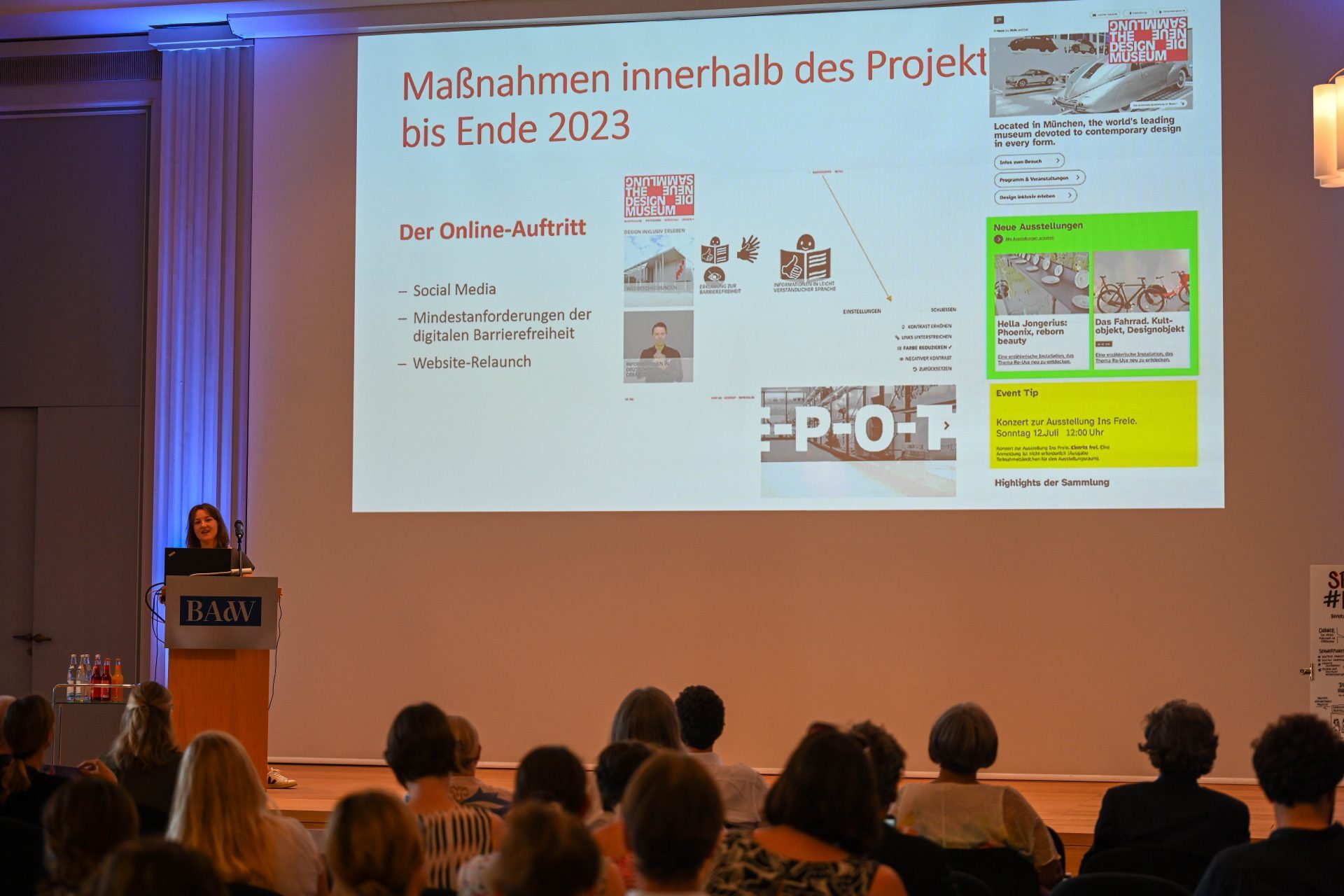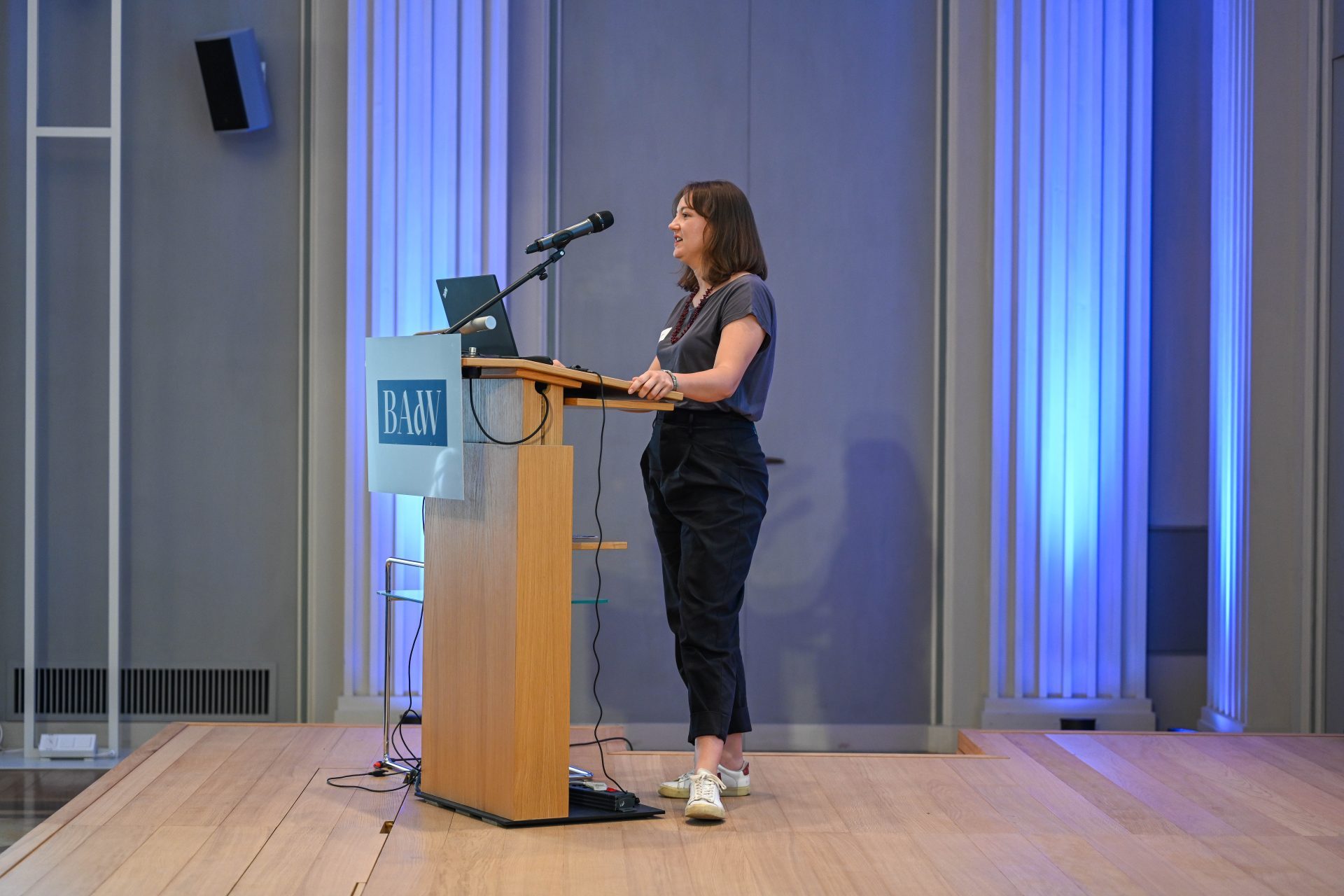An Inclusive Design Experience
Since February 2022, Die Neue Sammlung has been able to dedicate itself to inclusion and digital mediation thanks to funding from the Bavarian State Ministry of Science and the Arts and the support of PIN. Freunde der Pinakothek der Moderne. With the strategic project “An inclusive Design Experience” Die Neue Sammlung set out to implement its first inclusive activities.
An Inclusive Touch Station in the X-D-E-P-O-T
Since 17th December 2023 original objects can be experienced haptically in the X-D-E-P-O-T of Die Neue Sammlung and information can be received on each object. The content is available as texts and audio versions in English, German and easy-to-read language (German and English) as well as in the form of audio descriptions and videos in German sign language. The offer is aimed especially for people with hearing, visual and cognitive impairments and/or language comprehension difficulties but can of course be accessed by everyone. The content is also available in English.
Our work in pictures
-
Frauke Maria Petry leads a group through the X-D-E-P-O-T and presents the concept of the touch station.Photo: Die Neue Sammlung
-
The Behindertenbeirat München regularly supports ‘An Inclusive Design Experience’.Photo: Die Neue Sammlung
-
Designing inclusively means looking at other examples and engaging in dialogue with others.Foto: Campus Akademie (c) Andi Weiland
-
Interested people look at the demo table for the touch station.Photo: Die Neue Sammlung
“Making good design accessible to all.”
An Inclusive Website
The old website was already updated in 2022 to meet the minimum standard of digital accessibility, but that was not enough for us! The website was therefore relaunched in March 2024 and goes well beyond the minimum legal requirements.
Our online presence is one of the first websites to offer the majority of its content in easy-to-read language (German and English). Menu points above the headings show which pages have been prepared accordingly and translations are easy to access. Some pages are recorded by actors and there are short films in German sign language. Visual settings and general information can be accessed directly via the “Accessibility” button.
The museum has provided wall texts for the exhibitions in easy-to-understand language and easy-to-read language since 2019. Content can now also be accessed online via QR codes on the wall text of the respective exhibition.


2025
Online Collection
Thanks to the second grant ‘kultur.digital.strategie’ from the Bavarian State Ministry of Science and the Arts, Die Neue Sammlung has succeeded in making around 1,000 objects digitally accessible. The Collection Online provides informations in German, English, leichte Sprache, easy-to-read, German sign language as well as images, videos and 3D views.
The ‘Sound of Design’ and ‘X-D-E-P-O-T’ apps have been integrated into the Collection Online and expanded by a number of objects:
In the Future
Since April 2025, Die Neue Sammlung – The Design Museum has been working with game developers, designers and teachers from various schools to develop a game on the subject of design. The digital game is intended to be suitable for teaching and will also be made available to all interested parties via the website in 2026.
-
People responsible:
Frauke Maria Petry, Head of Project
Angelika Nollert, Museum Director
Caroline Fuchs, Curator -